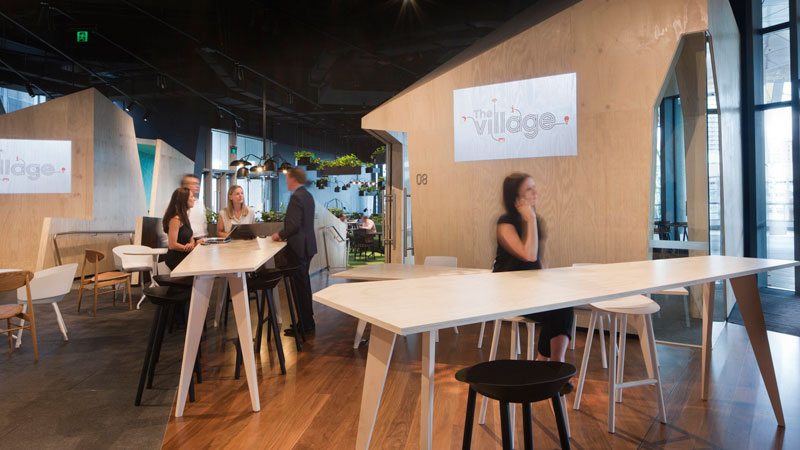 Daniel Davis, a New Zealand-trained architect and now Lead Researcher at WeWork, presented a keynote address to the Design Modelling Symposium held in Copenhagen in October 2015. His specialism is data and technology’s interaction with architecture.
Daniel Davis, a New Zealand-trained architect and now Lead Researcher at WeWork, presented a keynote address to the Design Modelling Symposium held in Copenhagen in October 2015. His specialism is data and technology’s interaction with architecture.
WeWork is a company providing shared workspaces, community and services for a growing number of businesses. The provision of community involves its own app, which serves as an internal director and communication hub; events for members; and other ways of working with and helping their members. Founded in 2010, the company now has 1,000 employees and 40,000 members across 20 cities with plans underway to expand into India and Mexico City. WeWork opened 40 new locations during 2015 – almost one per week.
Part of that expansion included the addition of Case Inc, which was a firm specialising in building information and technology. One of Case’s slogans was “Buildings = Data”, which means that buildings produce data and, conversely, data produces buildings. It was suggested that rather than architecture providing the building block for humanity’s hierarchy of needs (based on Maslow’s Hierarchy of Needs), it is now wifi/technology.
Utilising technology in a number of different ways has enabled WeWork to expand rapidly with less logistical problems than may have been the case when opening a new shared workspace almost every week globally.
Technology has been employed by WeWork in a number of interesting ways:
- Laser scanning of buildings: Although not widely used yet in the architectural world, it has provided an invaluable way for We Work to get to know buildings prior to taking on leases and as the main tool for ensuring that off-site construction of partitioning and provision of equipment for the building will fit. This technology has also enabled WeWork to take on buildings with issues or quirks which other companies may disregard as too difficult to work with.
- Data for business intelligence: Building Information Modelling software is used to collect a wide range of data for each building, including, amongst many others, floor plans and furniture schedules/locations. Such data can be used to assist good design in future buildings, facilities management of existing buildings and sales/marketing of the workspaces. Bug-tracking software has also been used to integrate with drawing/engineering packages, such as Revit, and other packages to analyse, and thus learn, from current buildings for application to future building projects.
- Data for user empathy: By utilising data with respect to energy use, from temperature sensors, from trackers carried by people within the buildings and from data collected on the use of building rooms/areas and equipment, information can be collated, for example, on the use of space within a building as well as the relationships of people within the space. This information may or may not be able to be used to change an existing building but it can be used to manage the building as well as influence future buildings.
The influence of technology in today’s world is huge and is continually expanding. Its possibilities within the architectural industry to be able to focus on the occupant’s use of the space and the building’s influence on an occupant is exciting.
I suggest putting 37 minutes aside and watch the video presentation below, it really is fascinating the leverage of technology in design.















Leave A Comment
You must be logged in to post a comment.